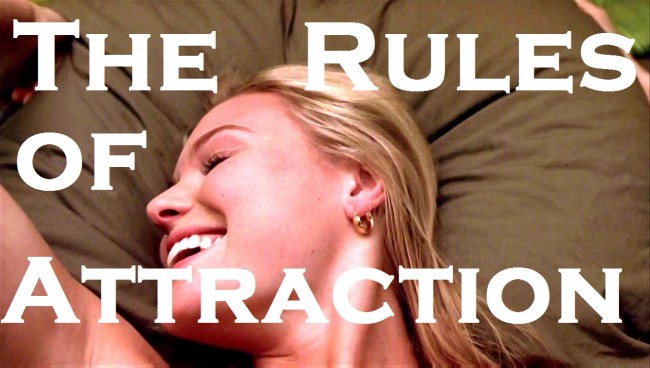Into the Queue

Written by Robert Patrick
Roger Avary is clearly not a very good person. The man has the moral compass of a butcher knife or a medieval plague (a DUI and a vehicular manslaughter charge aren’t things you want to grease your Match.com profile with). That said, the boozehound of a director has had scattershot success by co-authoring Pulp Fiction with Quentin Tarantino. Avary’s palpitating salaciousness isn’t something to be fawned over, but once, in the year of 2002, he managed to conduct a symphony of fanged nihilism and unbridled perversion that Dante Alighieri would blush over. Somehow Avary managed to construct a drill bit that found its way beneath the crust of emotionally disillusioned college students. His portrayal of vapid, self-indulgent youths is almost a hyper-satirical look at what’s most wrong with both socially and culturally lobotomized teens and twenty-somethings.
Teeth lacquered in saliva, lips contorted, and eyebrows tense. In Avary’s world – and first in Bret Easton Ellis’ universe – young people are Lucifer morning stars. Their youthful chirps are really the maladroit squawks of soulless buzzards. Romanticism is a guillotine and not a plume of graduation caps. Avary understands that it’s easy to manipulate young people into looking like dumb, hackneyed chuckleheads but it’s difficult to show them as complicated pieces of malfunctioning potential.”The Rules of Attraction” treats its characters like marionettes tied to pheromones.
In his quest for lampooning the skewed morals of a generation consumed by psychosexuality, Avary compiled the best soundtrack of pop-malaise since the nostalgia-laden Forrest Gump did some eight years prior (Donovan’s “Colours”, both wilted and hazy, hums with muddy recticence during one of the best scenes from “The Rules of Attraction”). In Wes Anderson’s flippant, pastel inundated world, songs prance, enthusiastically, over scenes with the carelessness of a music box. Here, The Cure’s droll, unhinged crescendos playfully boom and The Rapture’s finger-jarring guitar shredding maims any semblance of safety. Avary’s world seems to be living on the axis of havoc, but havoc can only exist if there is a deterrent to normalcy; in “The Rules of Attraction” there is no normalcy. Students peck at each other as if they were bird feed.
One of the reasons that Avary’s sonic, unfocused, cymbal-clanging workshop of horrors is so venerable is because of the way the movie offers no safety net. Booze isn’t a wistful tonic to be romanticized in “The Rules of Attraction”. Suicide is a clown car that smiles ear-to-ear in a way that no one has captured since John “Savage” Holland made “Better Off Dead”. The dialogue is disconcertingly deadpan, even when the synapses should be firing. Because the barbed words emitted by the students in the film are rarely malignant, it’s terrifying to see them, droned out in a coma of indulgence, acting as though every lewd exchange is an innocuous one.
“The Rules of Attraction” is a great movie because it is willing to be a phantasmagoria of errors. There’s no shock collar on Avary’s opus, making the film both super-infused with dread and the willingness to be what it portrays – something terrifying and without restraint.
